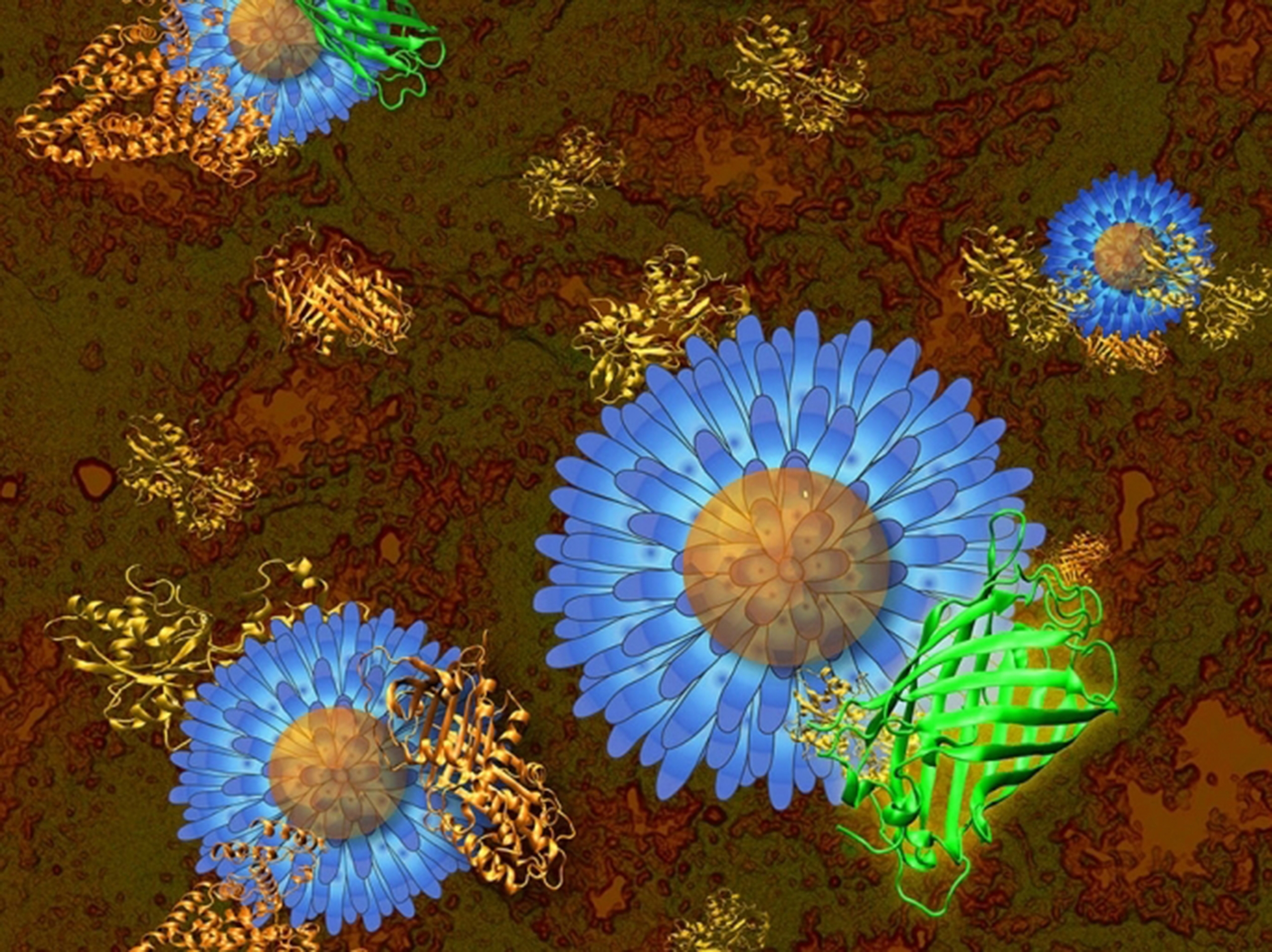
There is spellbinding beauty in “yellow, yellow” gold. But gold is not always yellow. If individual gold atoms are clumped together in small quantities – agglomerated – they assume various colors depending upon the physical properties of the agglomerates.
If all the particles are of about the same size and shape, the color and other physical properties, when duplicated, are exactly reproduced. Interestingly, aggregates can be grown with a specific geometry. They can even be grown into the particularly useful form – nanorods.
The assortment of colors that can be produced ranges from red to purple to blue.
But there is a problem.
If gold nanoparticles grown with the desired characteristics are not stabilized, the particles may continue to grow and change. To avoid this, scientists apply a surface-stabilizing agent to coat the particles.
This coating inhibits growth and is frequently chosen to impart additional useful properties.
Spheres of Research
It might seem atom agglomerates would serve little practical use. But there are a number of research areas that progress because of them. Gold nanoparticles are useful as biological probes. They can transport drugs to an anatomical site, such as a tumor. They make excellent contrast agents improving tissue visualization.
Nanoparticle Preparation
The most commonly used form of gold to prepare nanoparticles is chlorauric acid, HAuCl4. Varying additives and procedures reduce this soluble gold salt to the insoluble colloidal particles to the varying sizes and geometrical shapes of the nanoparticle endproducts.
In addition, the particles possess special charge and transport characteristics, alluded to in the image above. The additives include, but are not limited to
- Sodium citrate (varying concentrations)
- Bacteria
- Hydroquinone
- Sodium acetoacetonate
- Sodium borohydride (nanorods)
Sodium Citrate
Sodium citrate additive is used to generate gold “nanospheres”. The characteristics of those spheres are adjusted by varying the concentration of the sodium citrate solution. However, in the human body, cytotoxicity is of concern, and citrate imposes a degree of toxicity, so citrate concentrations need to be kept to a minimum. That means scientists needed to find new ways to generate gold nanoparticles.
Bacteria
Energetically undemanding and ecologically friendly, the generation of gold nanoparticles is now being investigated using bacterium. One bacterium variety undergoing investigation is Geobacillus. Two added benefits to this technique are inherent stability of the particles added to their relatively low cost.
Nanorods
Researchers can prepare short chains of attached gold atoms, or gold nanorods using a mixture of sodium borohydride and sodium hydroxide. Gold nanorods excel in absorbing infrared radiation. The particles are selectively taken up by tumor cells, rather than healthy cells. Afterward, infrared radiation is applied, the nanorods heat up, and the cancer cells are destroyed.
In another application, using nanorods in the manufacture of electronic display devices, the positioning or orientation of gold nanorods can be shifted using an electric field. Gold nanorod reflectivity varies greatly with rod spatial orientation. If all the particles are oriented one way, they do not absorb greatly, corresponding to an “off” position. In another orientation, they absorb greatly. This is the “on” position.
Gold Nanoparticle Research Promises New Vistas
Whenever a new shape, size, and geometry of gold nanoparticles is produced, new applications suggest themselves. For this reason, researching gold nanoparticles is proving to be a rich and fertile “Promised Land.”
Note: You might also enjoy Microwave Cooking Hot and Cold Spots – Why?
References:
- Chen, Shaowei. Cosmos at UC Santa Cruz: Synthesis of Gold Nanoparticles
- Zeng, Qinghui. Multiple Homogeneous Immunoassays Based on Quantum Dots – Gold Nanorods FRET Nanoplatform. (2012). Royal Society of Chemistry 2012
- Freese, Christian. Uptake and cytotoxicity of citrate-coated gold nanospheres: Comparative studies on human endothelial and epithelial cells. Particle and Fibre Toxicology
← Back to Classic Science
← Home
